Walking Safaris in Tanzania: Up Close with Wildlife on Foot
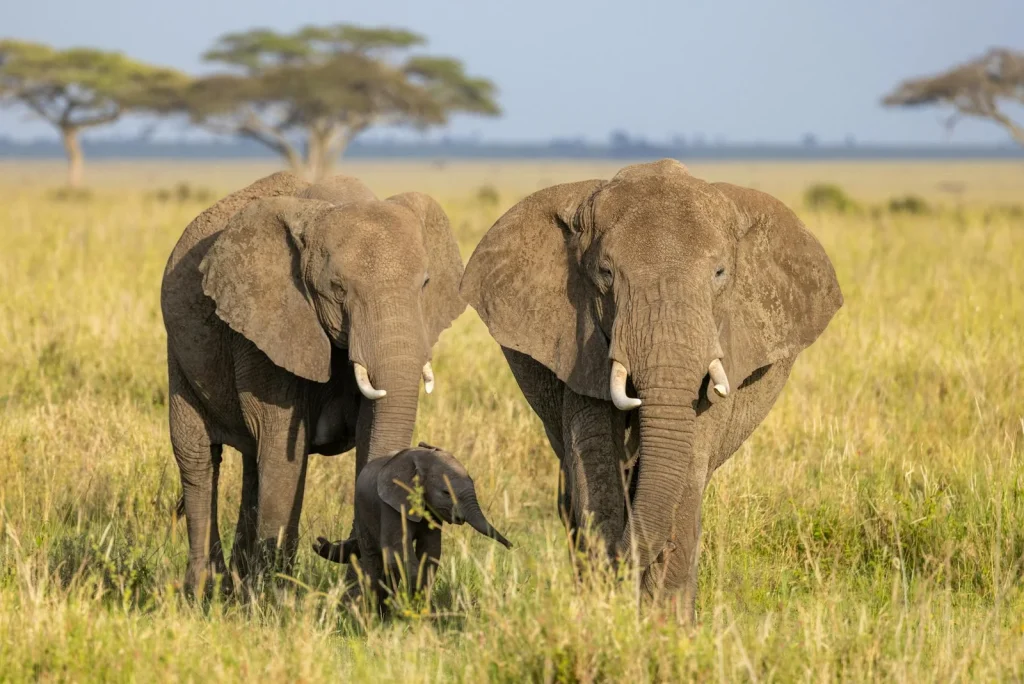
Walking Safaris in Tanzania: Up Close with Wildlife on Foot When most travelers think of a safari in Tanzania, they imagine 4×4 vehicles, dramatic wildlife sightings from the safety of a Land Cruiser, and the vast horizons of the Serengeti. But there’s another, more intimate way to experience Tanzania’s wilderness: the walking safari. Unlike the traditional game drive, a walking safari allows you to step directly into the environment of elephants, giraffes, zebras, and countless other creatures, giving you a chance to connect deeply with the land, its wildlife, and its people. In this comprehensive guide, we’ll explore everything you need to know about walking safaris in Tanzania, from the best locations and seasons to safety tips, cultural encounters, and what to pack. By the end, you’ll see why a walking safari is one of the most unforgettable ways to experience the wild. A safari is an immersive adventure where travelers explore the wilderness on foot, guided by professional rangers and Maasai trackers. Instead of passively watching from a vehicle, you become part of the landscape, quietly observing animals and plants while learning about the interconnected web of life that defines Tanzania’s ecosystems. Every step reveals something new: fresh lion tracks, the scent of wild sage crushed beneath your boots, or the call of a lilac-breasted roller echoing across the plains. Unlike game drives, walking safaris focus not only on the big animals but also on the smaller wonders—dung beetles, medicinal plants, bird calls, and even termite mounds. Tanzania offers a wide variety of landscapes where walking safaris are permitted and encouraged. Here are some of the top destinations: 1. Serengeti National Park While most visitors explore the Serengeti from a safari vehicle, select areas of the park allow walking safaris, especially in its less-traveled corners. Imagine quietly following a trail where wildebeest herds once roamed or spotting hyena tracks in the morning dew. 2. Ngorongoro Conservation Area The highlands of Ngorongoro are perfect for walking safaris, with trails leading through forests, volcanic landscapes, and Maasai villages. Walking here gives you the chance to see both wildlife and human culture up close. 3. Selous Game Reserve (Nyerere National Park) One of Tanzania’s largest protected areas, Selous is renowned for its walking safari experiences. You’ll walk alongside the Rufiji River, spotting hippos, crocodiles, elephants, and an incredible variety of birds. 4. Ruaha National Park Remote and less crowded, Ruaha offers a true wilderness walking safari. The park’s rugged terrain and large elephant populations make it a favorite for adventurous travelers. 5. Arusha National Park Close to Arusha city, this park is perfect for travelers who want to combine game drives with short walking safaris. Mount Meru provides a dramatic backdrop while you walk among giraffes and colobus monkeys. 6. Tarangire National Park Famous for its baobab trees and massive elephant herds, Tarangire also allows walking safaris in designated areas. Walking here offers a chance to observe the seasonal migrations and the park’s diverse birdlife. On a safari, you’ll typically set out early in the morning or late in the afternoon when temperatures are cooler. Your guide will brief you on safety protocols, hand signals, and what to do if you encounter large animals. The pace is unhurried, giving you plenty of time to observe, photograph, and ask questions. Depending on the location, a walking safari might last a few hours or be part of a multi-day trek with overnight camping in the bush. Wildlife encounters vary from park to park but can include elephants, zebras, antelopes, buffalo, and even lions at a safe distance. More commonly, you’ll focus on smaller details—the tracks left behind by hyenas, the habits of termite colonies, or the medicinal uses of acacia bark. Safety on Walking Safaris Safety is the number one priority during a walking safari. Professional guides are armed and trained to handle wildlife encounters. You’ll always walk in single file, stay quiet, and follow instructions carefully. Key safety guidelines include: With these precautions, a safari is both safe and thrilling. Many walking safaris in Tanzania incorporate visits to Maasai villages or Hadzabe hunter-gatherer communities. These cultural encounters offer insight into traditional lifestyles, survival skills, and deep-rooted connections with the land. For example, the Hadzabe of Lake Eyasi might demonstrate traditional hunting techniques, while the Maasai share stories of lion encounters and explain the role of cattle in their culture. This cultural layer makes a walking safari far more enriching than just a wildlife experience. The best time for a safari is during the dry season, from June to October. During this period, vegetation is thinner, making it easier to spot wildlife. Trails are also less muddy, and waterholes attract animals, increasing your chances of incredible sightings. The short dry season in January and February is also an excellent time, especially in southern parks like Ruaha and Selous. Packing the right gear ensures comfort and safety. Essentials include: For the truly adventurous, multi-day walking safaris offer a deeper immersion. These safaris include camping in the bush, dining under the stars, and falling asleep to the sounds of hyenas or lions in the distance. It’s an opportunity to unplug from modern life and experience nature at its rawest. Multi-day treks are especially popular in Selous, Ruaha, and parts of the Serengeti. They combine the excitement of wildlife encounters with the serenity of wilderness camping. One of the greatest benefits of choosing a walking safari is its low environmental impact. Vehicles can cause erosion, disturb wildlife, and pollute the air with noise and emissions. On foot, your presence is less intrusive, allowing for a more authentic connection with the land. By participating in walking safaris, travelers also contribute to conservation by supporting eco-friendly lodges and tour operators who prioritize sustainable practices. A walking safari in Tanzania is not just a safari—it’s an awakening. It sharpens your senses, deepens your appreciation for nature, and creates a sense of humility in the face of the wild. From following lion tracks at dawn to listening to Maasai legends around the
Culinary Trails of Tanzania: Sampling Authentic Local Flavors on Safari

Table of Contents Culinary Trails of Tanzania: Sampling Authentic Local Flavors on Safari Food is more than just nourishment—it is a reflection of culture, history, and the land itself. When travelers embark on a safari in Tanzania, the adventure often revolves around wildlife, landscapes, and culture. Yet one aspect that leaves a lasting impression is the Tanzanian cuisine, which blends indigenous flavors with Arabic, Indian, and colonial influences. From spicy pilau rice to freshly grilled nyama choma, every dish tells a story of the people and the regions where it originated. This article is a deep dive into the culinary trails of Tanzania, showing how food becomes an essential part of the safari experience. We’ll uncover the roots of Tanzanian cuisine, explore its regional specialties, and guide you to the best ways to enjoy local dishes while on safari. Whether you are a food lover or simply curious about new flavors, this journey through Tanzania’s kitchens and food markets will add depth to your travel experience. The Rich Heritage of Tanzanian Cuisine The story of Tanzanian cuisine is woven with threads of history, migration, and trade. Tanzania’s location along the Swahili Coast made it a hub for spice merchants, Indian traders, Arab settlers, and European colonizers. Over centuries, the culinary culture evolved into a vibrant fusion of influences. Indigenous Roots: Traditional Tanzanian communities relied on staple foods such as millet, sorghum, cassava, maize, and bananas. These form the backbone of many dishes still enjoyed today. Arab Influence: The introduction of spices like cardamom, cinnamon, and cloves brought depth to Tanzanian stews and rice dishes. Indian Influence: Chapati, samosas, biryani, and lentil-based dishes became part of everyday diets. European Influence: Colonial trade introduced new ingredients such as potatoes and tomatoes, further diversifying local recipes. Thus, Tanzanian cuisine is not static—it’s a living tradition that continues to evolve while retaining its authenticity. Staple Ingredients in Tanzanian Cuisine Understanding Tanzanian cuisine begins with knowing its essential ingredients. These staples can be found across rural villages, urban households, and safari camps: Maize (Corn): The base for ugali, a national dish. Rice: Especially important along the coast, featured in pilau and biryani. Plantains and Bananas: Used in stews and as fried snacks. Cassava and Sweet Potatoes: Common carbohydrate sources. Coconut: A coastal favorite, adding creaminess to curries and rice dishes. Beans and Lentils: Key protein sources for vegetarian meals. Meat and Fish: Nyama choma (grilled meat) and freshly caught fish are staples in different regions. Spices: Cloves, ginger, cardamom, and cumin define the aromatic character of Tanzanian cuisine. These ingredients are the canvas upon which the diversity of Tanzanian flavors is painted. Iconic Dishes in Tanzanian Cuisine 1. Ugali Ugali is more than just food; it is a symbol of Tanzanian identity. Made from maize flour and water, it resembles polenta and is often eaten with vegetables, meat, or fish. Every safari traveler should experience eating ugali with their hands—the traditional way. 2. Nyama Choma Grilled meat, usually goat or beef, is a social food enjoyed in roadside eateries, lodges, and family gatherings. The smoky aroma of nyama choma captures the essence of Tanzanian hospitality. 3. Pilau A fragrant rice dish cooked with spices, vegetables, and sometimes meat. Pilau is common at celebrations and is one of the most flavorful introductions to Tanzanian cuisine. 4. Chipsi Mayai Literally “chips and eggs,” this beloved street food is a potato-omelet fusion. Affordable and filling, it’s a must-try dish when exploring Tanzanian towns. 5. Zanzibar Dishes Zanzibar’s food reflects its spice island heritage. Coconut curries, octopus stew, and spiced tea stand out as unique treasures of Tanzanian cuisine. 6. Mshikaki Skewered and marinated beef or chicken roasted over charcoal. Perfect for an evening snack after a day of safari adventures. 7. Samaki wa Kupaka Fish marinated with spices and coconut milk, then grilled or fried. This coastal delicacy showcases the marriage of ocean and spice. Food and Culture: Tanzanian Cuisine on Safari Food is deeply tied to culture in Tanzania. When you go on safari, meals are not just about feeding travelers—they are curated cultural experiences. Safari lodges and camps increasingly feature Tanzanian cuisine on their menus, offering visitors a taste of the land they are exploring. Bush Breakfasts: Freshly brewed Tanzanian coffee, fruit, mandazi (fried dough), and eggs while watching the sunrise. Lunch Boxes: Often include chapati wraps, grilled chicken, tropical fruits, and bottled juice. Dinner Under the Stars: A mix of local stews, nyama choma, pilau, and international dishes to cater to all palates. Eating these meals outdoors, surrounded by wildlife sounds, adds another dimension to the enjoyment of Tanzanian cuisine. Regional Flavors of Tanzanian Cuisine Northern Tanzania The regions of Arusha and Kilimanjaro are known for hearty stews, maize dishes, and nyama choma. Here, safaris are complemented by village visits where you can experience home-cooked meals. Coastal and Zanzibar Seafood dominates the menu, from lobster to octopus, often prepared with coconut milk and spices. Zanzibar is also home to the famous spice markets, where travelers can see the origins of flavors used in Tanzanian cuisine. Lake Zone Around Lake Victoria, fish dishes take center stage. Nile perch and tilapia are staples, often grilled or fried. Southern Highlands This fertile region produces fresh vegetables, beans, and dairy. The influence of agriculture can be seen in the variety of vegetarian dishes. Street Food: The Everyday Flavor of Tanzanian Cuisine Street food is where Tanzanian cuisine truly shines in its most authentic form. From Dar es Salaam to Arusha, markets and roadside stalls bustle with activity. Popular street foods include: Vitumbua: Sweet rice pancakes. Mandazi: Slightly sweet fried dough, similar to donuts. Samosas: Triangular pastries filled with meat or vegetables. Grilled Maize: A snack for all ages. Juices and Sugarcane Drinks: Refreshing beverages to beat the tropical heat. Tasting street food is one of the best ways to connect with locals and experience Tanzanian cuisine firsthand. Spices: The Heartbeat of Tanzanian Cuisine No exploration of Tanzanian cuisine is complete without acknowledging the role of spices. Zanzibar, often
10 Best Sustainable Lodges in Tanzania: Eco-Friendly Safari Stays for Conscious Travelers

Table of Contents 10 Best Sustainable Lodges in Tanzania: Eco-Friendly Safari Stays for Conscious Travelers The safari experience in Tanzania is often described as a dream: endless savannahs, the roar of lions at dusk, and star-filled skies above remote camps. Yet with increased tourism, the importance of responsible travel has never been greater. This is where sustainable lodges come in—accommodations designed to minimize environmental impact while maximizing cultural respect and wildlife conservation. For the eco-conscious traveler, Tanzania offers some of Africa’s best examples of sustainable lodges that blend comfort, style, and environmental responsibility. In this guide, we’ll explore what makes these lodges unique, why they’re crucial for conservation, and where you can stay to ensure your safari supports both nature and communities. 1. Reducing Environmental Impact Unlike traditional hotels, sustainable lodges are built with eco-conscious design, renewable energy systems, and waste reduction practices. 2. Supporting Local Communities Many sustainable lodges work directly with nearby villages, employing local staff, sourcing food from local farms, and reinvesting profits into community projects. 3. Enhancing Conservation Efforts By staying at sustainable lodges, guests contribute to anti-poaching initiatives, wildlife monitoring, and habitat protection. 4. A Richer Safari Experience These lodges provide more than accommodation; they immerse you in nature while keeping your ecological footprint low. 1. Dunia Camp – Serengeti National Park Dunia Camp is one of the most recognized sustainable lodges in Tanzania, run almost entirely by women. It uses solar power, eco-camping designs, and promotes conservation-driven stays. 2. Tarangire Safari Lodge – Tarangire National Park Built near the Tarangire River, this lodge focuses on low-impact tourism with solar energy and eco accommodations. Guests enjoy comfort while supporting sustainable wildlife management. 3. Gibbs Farm – Ngorongoro Highlands Gibbs Farm is a working organic farm and one of Tanzania’s oldest sustainable lodges. With homegrown meals and cultural programs, it combines eco-conscious travel with authentic experiences. 4. Lake Natron Camp – Great Rift Valley This eco-camp integrates eco-camping principles with conservation-driven stays, providing access to flamingo breeding grounds while minimizing environmental disruption. 5. Nomad Lamai Serengeti – Northern Serengeti Nomad Tanzania lodges are leaders in low-impact tourism. Lamai uses natural building materials and solar energy, making it one of the most impressive sustainable lodges. 6. Rubondo Island Camp – Lake Victoria Located on a pristine island, this camp practices eco accommodations with strict conservation policies. Birding and chimpanzee tracking activities support long-term preservation. 7. Chumbe Island Eco Lodge – Zanzibar Chumbe is a global example of sustainable lodges, powered by solar, rainwater harvesting, and composting systems. It protects marine ecosystems through eco-camping experiences. 8. Beho Beho – Selous Game Reserve (Nyerere NP) Beho Beho blends luxury with conservation-driven stays, with profits supporting local rangers and wildlife programs. 9. Usangu Expedition Camp – Ruaha National Park This is a perfect example of a green safari camp. Guests participate in conservation projects while enjoying one of the most remote sustainable lodges. 10. Manta Resort – Pemba Island Manta Resort combines eco accommodations with marine conservation. Its famous underwater room allows visitors to experience ocean life in harmony with sustainability principles. To qualify as sustainable lodges, properties must go beyond buzzwords: Day 1-2: Tarangire National Park – Stay at Tarangire Safari Lodge for eco-camping with baobab landscapes.Day 3-4: Serengeti – Dunia Camp, a women-run lodge, for both wildlife and green safari living.Day 5: Ngorongoro Highlands – Gibbs Farm for cultural immersion and organic meals.Day 6: Lake Natron – Eco-lodge experience with flamingo sightings.Day 7: Zanzibar’s Chumbe Island – Marine eco accommodations and reef conservation. This itinerary highlights sustainable lodges while blending classic safari with responsible travel. Many Tanzanian communities have practiced sustainability long before the term existed: These traditions align perfectly with the philosophy behind sustainable lodges. The growth of eco-conscious travel means sustainable lodges are not just a niche—they’re the future of safari tourism. By choosing them, travelers actively support conservation, cultural preservation, and low-impact tourism. Tanzania offers far more than luxury tented camps—it offers an opportunity to stay at sustainable lodges that safeguard nature and culture for generations to come. From solar-powered camps in Serengeti to marine conservation projects in Zanzibar, eco accommodations redefine the safari experience. If you’re planning your next African adventure, consider one of Tanzania’s sustainable lodges—because the most memorable journeys are also the most responsible.
10 Best Birding Hotspots in Tanzania: Discover Hidden Avian Paradises
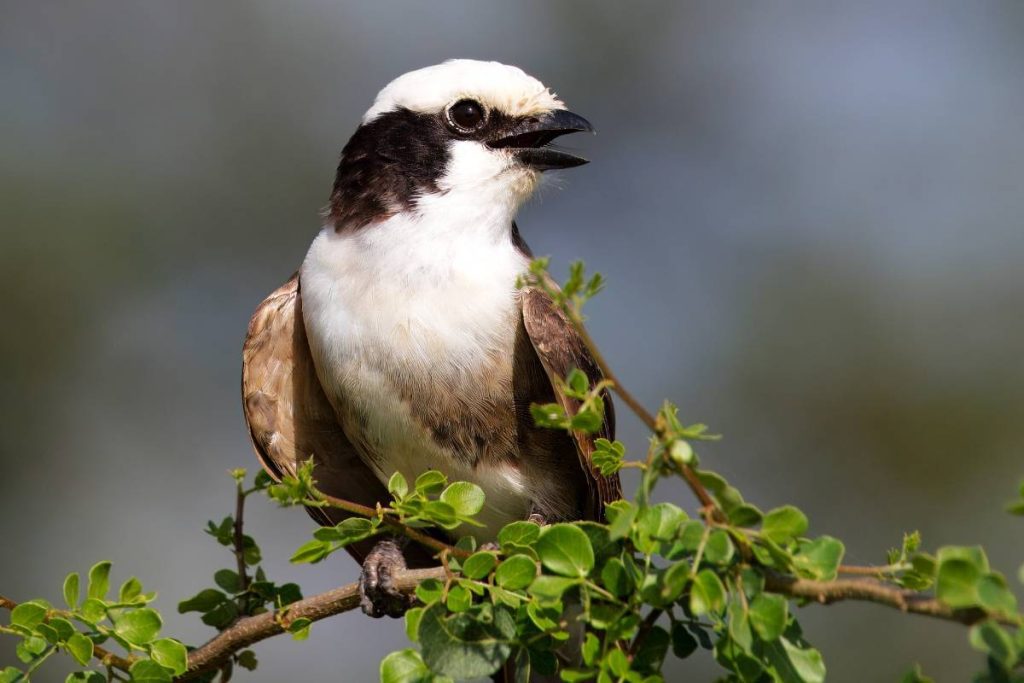
Table of Contents 10 Best Birding Hotspots in Tanzania: Discover Hidden Avian Paradises Tanzania is world-famous for its Big Five safaris and the Great Wildebeest Migration. But beyond lions, elephants, and rhinos lies another treasure: an extraordinary diversity of birds. With over 1,100 recorded bird species, Tanzania is one of Africa’s leading birding destinations. For keen birdwatchers, the country is a true paradise, offering everything from flamingo-filled lakes to forest canopies alive with colorful songbirds. This guide will take you through Tanzania’s top birding hotspots, uncovering hidden trails, migratory wonders, and insider tips for an unforgettable avian adventure. 1. Serengeti National Park The Serengeti is not only a wildlife safari icon but also one of the best birding hotspots in Tanzania. Here, you’ll encounter ostriches striding across the plains, kori bustards (the heaviest flying bird), secretary birds hunting snakes, and countless smaller species. 2. Ngorongoro Crater The Crater offers a natural amphitheater for birds. Flamingos gather on the alkaline lake, while highland forests host turacos, sunbirds, and hornbills. As one of Tanzania’s premier birding hotspots, Ngorongoro is excellent for both novice and seasoned birders. 3. Lake Manyara National Park Known for its tree-climbing lions, Lake Manyara is also a flamingo haven. The shallow soda lake attracts thousands of pink flamingos, pelicans, and storks, making it a prime birding hotspot for waterbirds. 4. Tarangire National Park Home to giant baobabs and large elephant herds, Tarangire also boasts over 500 bird species. The park is especially good for raptors, making it one of the richest birding hotspots in East Africa. 5. Lake Natron This remote alkaline lake is the world’s main breeding ground for lesser flamingos. The surreal volcanic landscapes, coupled with huge bird colonies, make Lake Natron one of the most unique birding hotspots in Tanzania. 6. Ruaha National Park Ruaha is vast and less crowded, providing excellent birding opportunities. Over 570 bird species live here, including fish eagles, kingfishers, and bee-eaters. It’s one of Tanzania’s most underrated birding hotspots. 7. Selous Game Reserve (Nyerere National Park) Africa’s largest protected area is not just about wild rivers and elephants—it’s also a treasure for birders. The Rufiji River attracts wading birds, while miombo woodlands shelter many endemic species. This makes Selous a spectacular birding hotspot. 8. Udzungwa Mountains A true hidden gem, the Udzungwa range is home to endemic species like the Udzungwa Forest Partridge and Rufous-winged Sunbird. For birders seeking rare sightings, this is a must-visit birding hotspot. 9. Pemba Island Beyond Zanzibar, Pemba Island offers lush forests and mangroves with endemic birds like the Pemba white-eye and Pemba green pigeon. Birding here feels off the beaten path, making it a unique island birding hotspot. 10. Kilimanjaro & Mount Meru Slopes Montane forests provide habitats for turacos, barbets, and sunbirds. The higher you climb, the rarer the species become. For trekkers, combining a mountain climb with birdwatching creates an unforgettable birding hotspot experience. While wildlife safaris peak in the dry season, birders find the green season (November to April) particularly rewarding. This is when migratory species arrive and local birds display breeding plumage. However, many birding hotspots offer incredible sightings year-round. Birds hold cultural and spiritual importance across Tanzania. For example: Day 1: Arrival in Arusha – birding at Lake Duluti.Day 2: Tarangire – baobab landscapes and raptor sightings.Day 3: Lake Manyara – flamingos and waterbirds.Day 4: Ngorongoro Crater – highland species.Day 5-6: Serengeti – grassland birds and migratory species.Day 7: Lake Natron – flamingo breeding colonies. This itinerary covers multiple birding hotspots in a single trip. While exploring Tanzania’s birding hotspots, it’s vital to practice eco-friendly tourism: Tanzania isn’t just about big game safaris. Its birding hotspots reveal another layer of the country’s natural wealth. Whether you’re an amateur or seasoned birder, you’ll find unmatched variety, stunning landscapes, and a sense of discovery in every bird call. From the Serengeti plains to the misty Udzungwa forests, Tanzania’s birding hotspots provide unforgettable opportunities for birdwatchers. With over 1,100 species waiting to be discovered, Tanzania is not just a safari destination—it’s a world-class birding paradise.
Tanzanian Stargazing Safaris: Where to Catch African Skies & Celestial Wonders

Table of Contents Tanzanian Stargazing Safaris: Where to Catch African Skies & Celestial Wonders When people dream of an African safari, they often picture golden savannahs, the Big Five, and breathtaking sunsets. But Tanzania offers something even more magical beyond its iconic wildlife—the night sky. A stargazing safari in Tanzania combines traditional game drives with the chance to witness pristine, star-filled skies free from city lights. From the glowing arc of the Milky Way to shooting stars and distant planets, Tanzania is one of the best places in the world for astro-tourism. In this guide, we’ll explore what makes Tanzania the ultimate destination for a stargazing safari, the best parks and locations to experience it, tips for combining astronomy with wildlife adventures, and how to plan a trip that brings the cosmos within reach. 1. Low Light Pollution Unlike major cities, most of Tanzania’s national parks are free from light pollution. Whether you’re camping in Serengeti, Tarangire, or the Ngorongoro highlands, the skies remain crystal clear. This makes Tanzania an unbeatable destination for a stargazing safari. 2. Unique Position on the Equator Tanzania’s equatorial position gives visitors a chance to see constellations from both the Northern and Southern hemispheres. On your stargazing safari, you can trace Orion’s Belt, witness the Southern Cross, and enjoy year-round celestial shows. 3. Blend of Nature and Astronomy A stargazing safari isn’t just about looking up—it’s about the magical atmosphere of combining wildlife sounds, campfires, and cultural stories under the stars. The Maasai and other Tanzanian communities have rich oral traditions connected to the night sky. Serengeti National Park The Serengeti is not only famous for the Great Migration but also for its endless, open skies. Camps and lodges often set up stargazing decks, perfect for your stargazing safari experience. With almost no light pollution, you’ll see the Milky Way stretch across the horizon. Ngorongoro Conservation Area The crater rim, sitting at an elevation of over 2,200 meters, provides breathtaking skies. Cooler air and less humidity make for sharper visibility—an unforgettable spot on your stargazing safari. Tarangire National Park Known for its baobab trees, Tarangire offers a surreal stargazing setting. Imagine gazing at constellations framed by ancient trees while lions roar in the distance. This is the essence of a stargazing safari. Lake Natron Remote and untouched, Lake Natron is one of the most atmospheric locations for a stargazing safari. With its otherworldly landscape, salt flats, and flamingos, it feels like another planet beneath the African night sky. Mount Kilimanjaro & Mount Meru Base Camps Trekkers often forget that climbing Kilimanjaro or Meru offers some of the best high-altitude stargazing opportunities. Overnight at base camps and enjoy a stargazing safari at elevations where the sky feels closer than ever. The skies are clearest during Tanzania’s dry seasons: During these periods, your stargazing safari is less likely to be affected by clouds or rain. Pro Tip: Time your trip with a new moon for the darkest skies possible. On your stargazing safari, you’ll discover that Tanzanian cultures have deep connections with the stars. Day 1-2: Arusha & Mount Meru – Acclimatize and enjoy your first stargazing session.Day 3-4: Serengeti National Park – Combine wildlife viewing with nightly stargazing sessions.Day 5: Ngorongoro Crater Rim – High-altitude stargazing above the crater.Day 6: Tarangire National Park – Baobab-framed skies on a stargazing safari night drive.Day 7: Lake Natron – Remote, otherworldly stargazing finale. A stargazing safari should always promote sustainability: Unlike typical safaris focused only on animals, a stargazing safari allows you to experience Tanzania on a cosmic scale. The stars remind us that safari is not just about the Earth’s creatures but about our place in the universe. If you’re seeking a safari that goes beyond wildlife, a stargazing safari in Tanzania is an unforgettable journey into the heart of nature and the universe. Whether you’re a passionate astronomer, a photographer, or simply someone who loves starry nights, Tanzania offers skies that rival anywhere on Earth.
Wellness & Hiking: Geothermal Spa Trails Around the Rift Valley
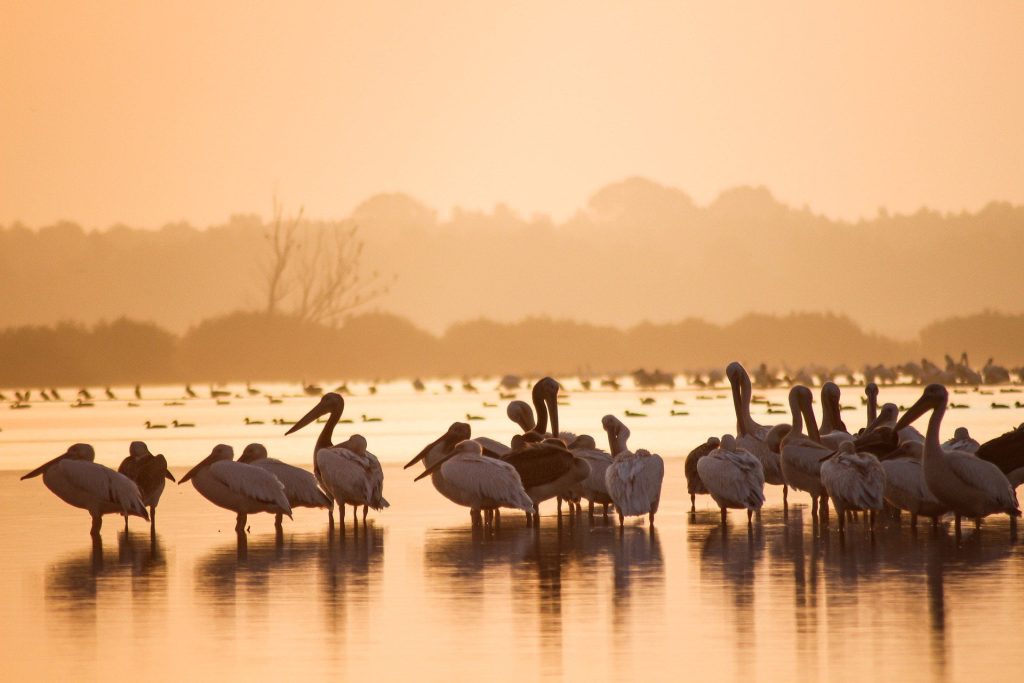
Table of Contents Wellness & Hiking: Geothermal Spa Trails Around the Rift Valley Tanzania is famous for its stunning landscapes, abundant wildlife, and vibrant cultures. But beyond the classic safari experiences, the Rift Valley offers a unique combination of wellness and adventure: geothermal spa walking Tanzania trails. Imagine hiking through spectacular volcanic landscapes, then relaxing your muscles in natural hot springs heated by the earth’s inner energy. This fusion of wellness and hiking makes geothermal spa walking Tanzania an unforgettable experience for nature lovers and wellness seekers alike. In this article, we explore the best geothermal spa walking Tanzania trails around Tanzania’s Rift Valley, share tips for making the most of your journey, and explain why this emerging wellness trend is gaining popularity. If you are looking for a unique way to combine fitness, relaxation, and nature, geothermal spa walking Tanzania offers an exceptional option. The combination of trekking scenic volcanic routes and soaking in natural hot springs defines the true essence of geothermal spa walking Tanzania. Whether you are an experienced hiker or a wellness traveler, exploring the Rift Valley through geothermal spa walking Tanzania trails allows you to reconnect with the earth’s energy in the most soothing and invigorating way possible. Geothermal spa walking Tanzania is a wellness activity combining moderate hiking with visits to natural hot springs or geothermal spas. Along scenic trails heated by the Earth’s geothermal energy, travelers can enjoy the therapeutic benefits of mineral-rich thermal waters. In Tanzania, the Rift Valley is dotted with such natural wonders, making geothermal spa walking Tanzania an increasingly popular choice for wellness and adventure seekers. Walking these trails is a holistic experience, stimulating the body through exercise and relaxation while immersing oneself in pristine natural surroundings. For those interested in unique travel experiences, geothermal spa walking Tanzania offers a perfect blend of physical activity and soothing thermal baths. The combination of hiking and natural spas creates a rejuvenating journey that defines geothermal spa walking Tanzania. Exploring the Rift Valley’s volcanic landscapes on foot while stopping to relax in hot springs is what sets geothermal spa walking Tanzania apart as a must-try wellness adventure. 1. Lake Natron Hot Springs Trail Lake Natron is a stunning alkaline lake with vibrant flamingos, located within the Great Rift Valley. The geothermal springs nearby offer warm, soothing waters after a rewarding hike around the lake’s volcanic formations. 2. Engare Sero Geothermal Trail Located near the Tanzanian-Kenyan border, Engare Sero features bubbling hot springs surrounded by rich Maasai culture. The trail offers an excellent blend of geothermal wonders and cultural immersion. 3. Oldonyo Lengai Geothermal Springs Walk Oldonyo Lengai, the “Mountain of God,” is an active volcano revered by the Maasai. The nearby geothermal springs are perfect for a post-hike soak. Trails here offer dramatic volcanic views and the chance to explore unique volcanic ash plains. 4. Lake Eyasi Hot Springs Path Near Lake Eyasi, another Rift Valley gem, geothermal springs provide natural spa experiences after exploring the lake and visiting Hadza communities, one of the last hunter-gatherer tribes. 5. Kitulo Plateau and Geothermal Springs While Kitulo National Park is famed for wildflowers, nearby geothermal springs add a wellness dimension to hiking trips here. The plateau’s cool climate and vibrant blooms combine well with thermal relaxation. What to Pack Health & Safety Tips Many geothermal springs are close to Maasai communities who have traditionally used these natural resources for healing and rituals. Visitors on geothermal spa walking Tanzania journeys have a unique opportunity to learn about these cultural practices and even join community-led spa rituals, blending wellness and cultural respect. When experiencing geothermal spa walking Tanzania, engaging with local Maasai traditions enriches the trip beyond physical relaxation, creating a meaningful connection to the land and its people. This cultural immersion is one of the many reasons why geothermal spa walking Tanzania is becoming a favored wellness activity, combining natural healing with authentic local experiences. Many local tour operators offer combined hiking and wellness packages that include transportation, guides, accommodation, and hot spring access. Booking with experienced guides ensures a safe and enriching experience. Geothermal spa walking Tanzania offers a one-of-a-kind journey into the heart of the Rift Valley’s volcanic landscapes, healing hot springs, and vibrant cultures. Whether you seek wellness, adventure, or cultural immersion, this emerging trend invites travelers to reconnect with nature and themselves. Start planning your geothermal spa walking adventure today and discover Tanzania’s Rift Valley like never before!
Family Camp Tanzania Hot Springs: 7 Scenic & Relaxing Escapes
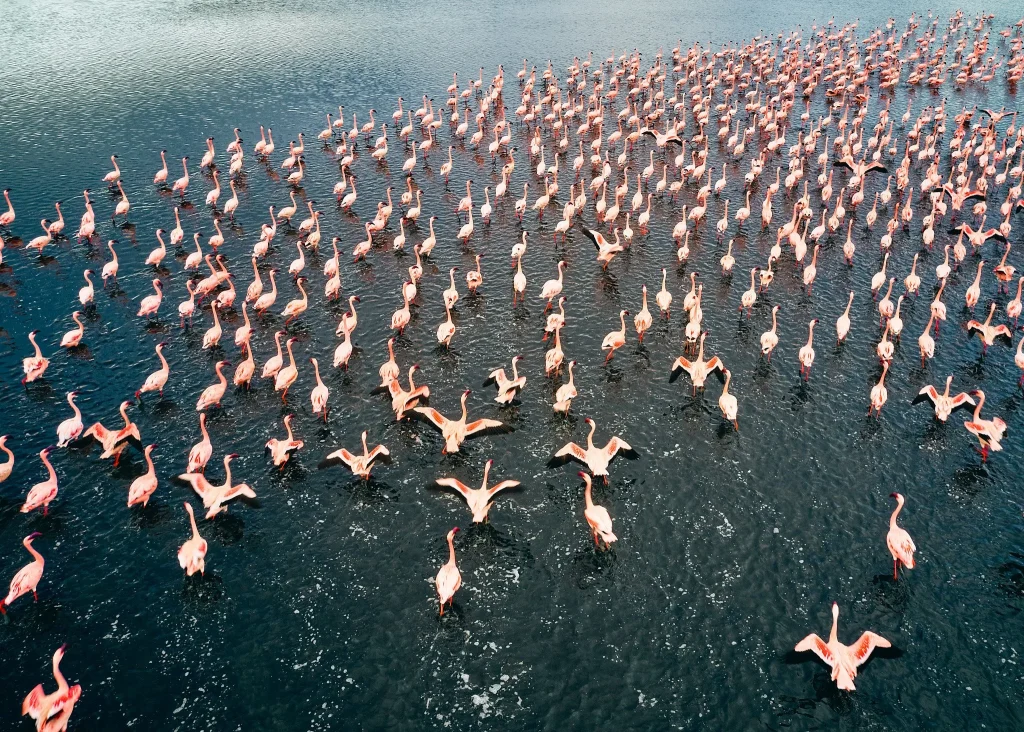
Table of Contents Family Camp Tanzania Hot Springs: 7 Scenic & Relaxing Escapes When it comes to unique and memorable family getaways, few experiences can rival the charm of a family camp Tanzania hot springs adventure. Northern Tanzania, known for its iconic national parks and breathtaking landscapes, is also home to serene geothermal treasures—hot springs that blend natural relaxation with exciting outdoor activities. Imagine setting up camp with your loved ones under the African skies, enjoying warm thermal waters by day and stargazing by night. In this comprehensive guide, we explore the top family camp Tanzania hot springs destinations, what makes them special, and how to plan your trip for the perfect balance of adventure, relaxation, and cultural immersion. A family camp Tanzania hot springs trip offers something for every age group: a) Kikuletwa Hot Springs (Chemka) – Moshi Region One of the most famous family camp Tanzania hot springs spots, Kikuletwa is an oasis of crystal-clear blue water surrounded by fig trees. Located about 1.5 hours from Arusha, it’s ideal for families looking for a day of swimming, picnicking, and light adventure. Why it’s great for families: Camping Tip: Set up at nearby campgrounds or eco-lodges that allow you to combine a visit to Kikuletwa with trips to Mount Kilimanjaro’s foothills. Lake Natron is not just a dramatic salt lake—its surroundings also hide smaller geothermal pools perfect for a quiet soak. This family camp Tanzania hot springs location offers a mix of cultural tourism, flamingo watching, and camping under the stars. Why it’s great for families: Less known but equally enchanting, Ngare Sero offers an off-the-beaten-path family camp Tanzania hot springs experience. It’s best combined with a visit to nearby Mount Meru or Arusha National Park. Why it’s great for families: While most visitors come here to climb the “Mountain of God,” the surrounding region features small natural hot springs that are perfect for an evening soak after a day of hiking. Camping here means breathtaking sunrise views over the Rift Valley. On the way to Lake Manyara National Park, you can find small geothermal pools nestled in rural villages. They make for a great cultural and relaxing stop during a family camp Tanzania hot springs itinerary. A well-planned family camp Tanzania hot springs trip usually includes: While hot springs can be enjoyed year-round, the best months for a family camp Tanzania hot springs trip are June to October (dry season). The weather is pleasant, and camping conditions are ideal. A family camp Tanzania hot springs trip is even more rewarding when combined with: For a successful family camp Tanzania hot springs adventure, bring: When enjoying a family camp Tanzania hot springs trip, always: Day 1: Arrival in Arusha → Transfer to Kikuletwa Hot Springs → Evening campfireDay 2: Early swim → Transfer to Lake Natron → Visit Maasai village → Sunset photographyDay 3: Morning soak → Explore Rift Valley waterfalls → Camp overnightDay 4: Ngare Sero Hot Springs → Birdwatching → Return to camp for storytelling eveningDay 5: Depart for Arusha or extend trip to Tarangire National Park
Safari Beach Combo Tanzania: The Ultimate Dual Adventure
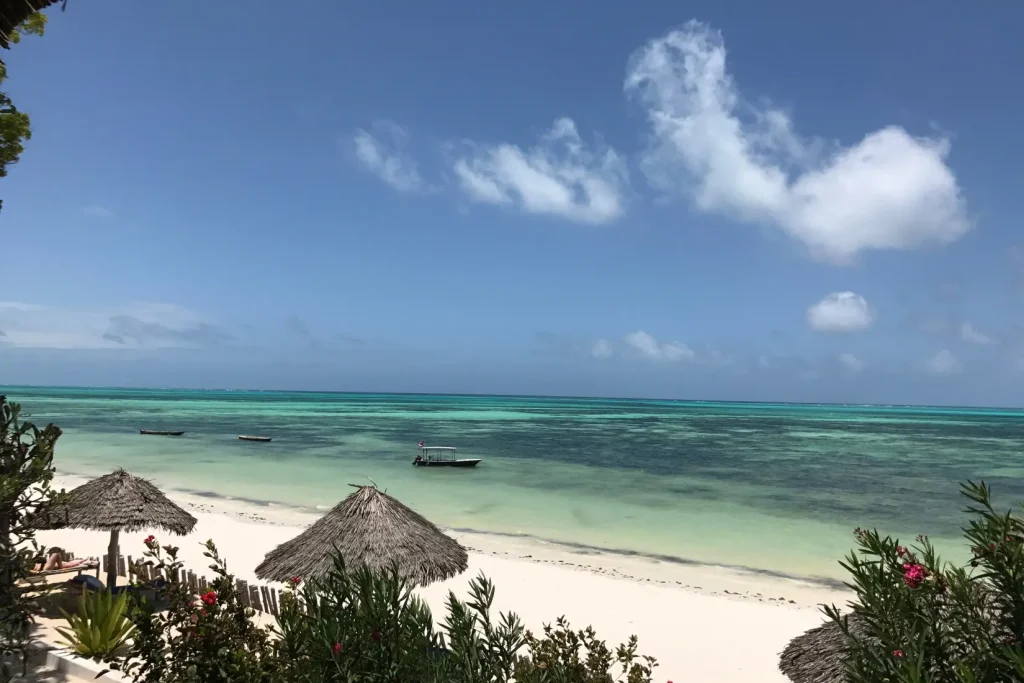
Table of Contents Safari Beach Combo Tanzania: The Ultimate Dual Adventure When it comes to travel experiences that combine the thrill of adventure with the serenity of relaxation, nothing beats a Safari Beach Combo Tanzania itinerary. Tanzania offers the rare opportunity to witness world-class wildlife in its famous national parks and then unwind on stunning Indian Ocean beaches—all within the same trip. Whether you’re a wildlife enthusiast, a beach lover, or a bit of both, this unique combination offers a journey you’ll remember for a lifetime. In this guide, we’ll explore how to craft the perfect Safari Beach Combo Tanzania adventure, from iconic safari destinations like the Serengeti to idyllic beach escapes in Zanzibar and beyond. Tanzania is blessed with incredible geographical diversity—savannahs teeming with wildlife, volcanic highlands, lush forests, and turquoise coastal waters. By combining a safari and beach holiday, you get the best of both worlds. Here’s why a Safari Beach Combo Tanzania is a winning choice: Serengeti National Park No Safari Beach Combo Tanzania is complete without the Serengeti. Famous for the Great Wildebeest Migration, it’s home to lions, leopards, cheetahs, elephants, and more. The open plains and golden sunsets create a truly cinematic backdrop. Ngorongoro Crater A UNESCO World Heritage Site, the crater is a natural amphitheater brimming with wildlife, making it a highlight of any Safari Beach Combo Tanzania itinerary. It’s one of the best places in Africa to spot the Big Five in a single day, and many Safari Beach Combo Tanzania packages include it for its incredible game-viewing opportunities. Whether starting your adventure inland or ending at the coast, the crater adds unmatched diversity to a Safari Beach Combo Tanzania. With its breathtaking views and abundant wildlife, it’s no wonder travelers consider it an essential stop in their Safari Beach Combo Tanzania experience. Tarangire National Park Known for its large elephant herds and iconic baobab trees, Tarangire is a less-crowded gem in a Safari Beach Combo Tanzania plan. Selous Game Reserve (Nyerere National Park) A vast wilderness with river safaris, boat trips, and remote game drives—perfect for travelers seeking privacy. Zanzibar Zanzibar is the jewel of Tanzania’s coast and the most popular add-on for a Safari Beach Combo Tanzania. Think white-sand beaches, spice tours, and rich Swahili culture. Pangani A quieter alternative to Zanzibar with untouched beaches and a laid-back fishing village charm. Mafia Island Famous for whale shark diving and pristine coral reefs. Perfect for an off-the-beaten-path Safari Beach Combo Tanzania. 7-Day Combo Itinerary Day 1-3: Serengeti – Game drives, hot air balloon safari, wildlife photography.Day 4: Ngorongoro Crater – Big Five sightings.Day 5-7: Fly to Zanzibar – Relaxation, spice tours, and snorkeling. Day 1-2: Tarangire – Elephant herds and baobab landscapes.Day 3-5: Serengeti – Great Migration and predator sightings.Day 6: Ngorongoro Crater – Full-day crater tour.Day 7-10: Zanzibar – Beach leisure, Stone Town exploration, diving trips. Day 1-3: Selous Game Reserve – River safaris and exclusive lodges.Day 4-6: Ruaha National Park – Remote game viewing and walking safaris.Day 7: Fly to Zanzibar.Day 8-14: Split between Paje and Kendwa for variety. Your Safari Beach Combo Tanzania can be tailored to match your budget: A Safari Beach Combo Tanzania is an amazing experience, but it’s also an opportunity to travel responsibly: If your heart beats for both the wild savannah and the gentle ocean, this journey is the perfect match.
Maasai Cultural Tourism in Tanzania: A Responsible Approach
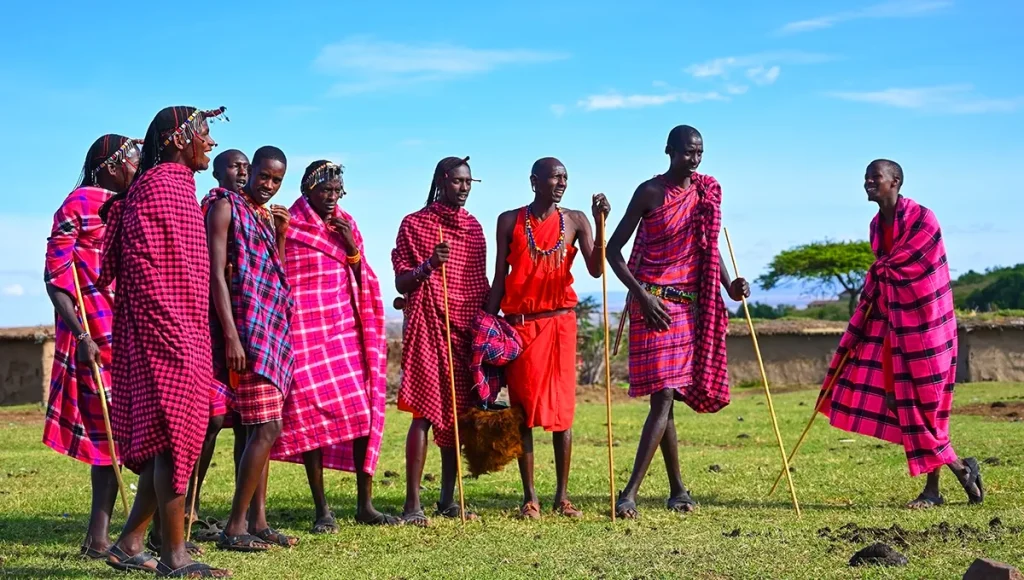
Table of Contents Maasai Cultural Tourism in Tanzania: A Responsible Approach Tanzania is home to one of Africa’s most iconic indigenous groups — the Maasai people. Known for their distinctive dress, beadwork, warrior traditions, and pastoral lifestyle, the Maasai have become a symbol of East Africa’s cultural heritage. Many travelers visiting Tanzania are eager to meet the Maasai, learn about their way of life, and participate in community-led tourism activities. However, not all cultural tourism is conducted in an ethical way. That’s where responsible Maasai tourism comes in. In this guide, we will explore what responsible Maasai tourism means, why it matters, and how you can ensure your visit benefits the communities while preserving their culture for future generations. Responsible Maasai tourism is an approach to cultural tourism that ensures respectful, fair, and sustainable interaction between travelers and Maasai communities. Instead of commodifying culture for quick profits, it focuses on empowering the Maasai to control how their traditions are presented and shared. It emphasizes: When you choose responsible Maasai tourism, you are making a conscious decision to travel ethically, supporting livelihoods and protecting the authenticity of the experience. Many Maasai cultural visits are organized by outside operators who offer little to no benefit to the communities themselves. Villages may be paid a small, one-time fee while outsiders pocket most of the profits. In some cases, staged performances and aggressive selling of souvenirs replace genuine cultural exchange. By contrast, responsible Maasai tourism: Your travel choices have the power to shape how cultural tourism develops in Tanzania. The Maasai are semi-nomadic pastoralists primarily living in northern Tanzania and southern Kenya. Cattle play a central role in their economy, culture, and identity. Traditionally, wealth is measured in cattle and children, and cattle are a primary source of food, trade, and ceremony. Some cultural highlights you may encounter through responsible Maasai tourism include: Not every “Maasai village visit” is genuine. To ensure you’re engaging in responsible Maasai tourism, consider the following checklist: Here are some excellent examples of responsible Maasai tourism you can explore: a) Olpopongi Maasai Cultural Village Located in West Kilimanjaro, Olpopongi is a 100% community-owned cultural village offering an immersive experience. Visitors can participate in spear-throwing, traditional cooking, and storytelling — all led by Maasai hosts. b) Lake Natron Cultural Visits At the base of Ol Doinyo Lengai volcano, Maasai communities offer guided walks, homestays, and cultural performances. Tourism revenue supports local education and water projects. c) Ngorongoro Conservation Area Maasai Tours Some villages inside the Ngorongoro area run regulated visits, ensuring that proceeds go directly to residents. When participating in responsible Maasai tourism, follow these respectful guidelines: One of the most significant benefits of responsible Maasai tourism is the empowerment of Maasai women. Traditionally, women are skilled in beadwork, cooking, and home building, but tourism has opened new opportunities: By ensuring women are part of decision-making and profit-sharing, tourism becomes a tool for gender equality. The Maasai face challenges such as land pressure, climate change, and modernization. Responsible Maasai tourism provides an income source that allows families to maintain traditions while accessing education and healthcare. The balance lies in celebrating cultural identity without freezing it in time. To book an authentic experience: By choosing responsible Maasai tourism, you are: When you engage in responsible Maasai tourism, you’re not just ticking off a cultural experience; you’re contributing to the preservation and empowerment of one of Africa’s most remarkable communities. Travel with respect. Travel with purpose. And let your journey be a story worth telling.
Best Beaches in Zanzibar: From Nungwi to Kendwa
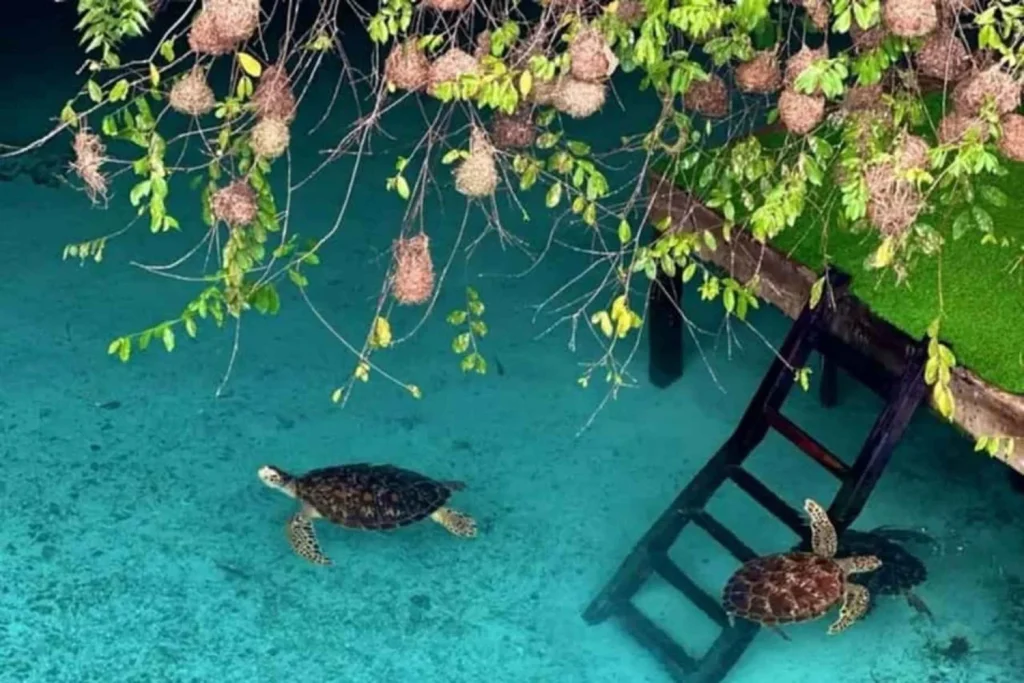
Table of Contents Best Beaches in Zanzibar: From Nungwi to Kendwa Zanzibar is famed for its powder-white sands, turquoise waters, and laid-back beach villages. This guide explores the top Zanzibar beaches — from lively Nungwi to idyllic Kendwa — revealing hidden gems, top activities, and insider tips for each shoreline. Located on the northern tip of Unguja, Nungwi Beach ranks as one of the top Zanzibar beaches thanks to its lively atmosphere and stunning sunsets. Nearby, quieter spots like Reef Beach offer more seclusion, reinforcing that Nungwi is truly a crown jewel among top Zanzibar beaches. Just west of Nungwi, Kendwa Beach is known for minimal tidal shifts and perfect swimming conditions—a clear standout among top Zanzibar beaches. With its beautiful coral gardens and consistently calm waters, Kendwa deserves its place among the top Zanzibar beaches. On the east coast, Matemwe Beach and nearby Mnemba Bay offer prime reef access and serene surroundings — essential entries on the list of top Zanzibar beaches. Mnemba Atoll snorkeling ranks among the highlights of any stay at Matemwe—cementing its reputation among top Zanzibar beaches. Located in southeast Zanzibar, Paje Beach is a wind lover’s haven and a must-visit within the top Zanzibar beaches lineup. Paje also hosts vibrant seafood nights and educational turtle-planting projects—adding depth to Zanzibar’s cultural tapestry. Michamvi‘s eastern coast offers two contrasting beaches—Kae and Blue Lagoon—earning it recognition among the top Zanzibar beaches. Michamvi’s hotels and lodges provide exclusive coastal escapes—perfect for couples or travelers seeking tranquility. Venture beyond the main island to find hidden gems on Pemba Island and Mafia Island, both boasting remote coastlines and offering exceptional entries among the top Zanzibar beaches. These islands showcase Zanzibar at its most peaceful—true remote leaders among the top Zanzibar beaches. Although primarily a cultural hub, Stone Town offers nearby snorkeling and beach access—uniquely qualifying it among top Zanzibar beaches. For travelers wanting a coastal experience balanced with culture, this area rounds out the full spectrum of top Zanzibar beaches. From the sunset skies of Nungwi and Kendwa to the coral reefs off Matemwe, the top Zanzibar beaches offer something for every type of traveler—adventure, wellness, solitude, and culture. Seek the serenity of Michamvi, the energy of Paje, or the history of Stone Town’s coastline—you’ll discover a beach for every mood in Zanzibar.
